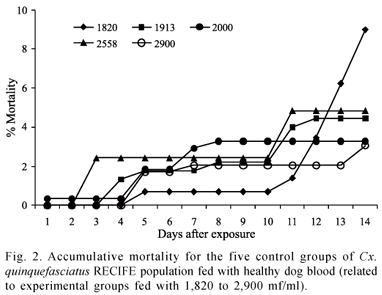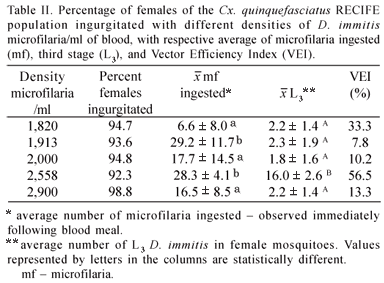The metropolitan region of Recife, Brazil is endemic for Dirofilaria immitis and has an environment favorable to the development of Culex quinquefasciatus. The goal of this study was to evaluate the vector competence of the Cx. quinquefasciatus RECIFE population for D. immitis transmission. A total of 2,104 females of Cx. quinquefasciatus RECIFE population were exposed to different densities of D. immitis microfilariae blood meals, ranging from 1,820 to 2,900 mf/ml of blood, in a natural membrane apparatus. The results showed a variation between 92.3% and 98.8% of females fed. The exposure of the Cx. quinquefasciatus RECIFE population to different densities of microfilariae did not influence the mortality of the mosquitoes. Infective larvae from D. immitis were observed in the Malpighian tubules beginning on the 12th day, whereas larvae were observed in the head and proboscis beginning on the 13th day following infection. The vector efficiency index (VEI) presented by the mosquitoes ranged from 7.8 to 56.5. The data demonstrates that the Cx. quinquefasciatus RECIFE population has great potential for the transmission of D. immitis, as it allowed the development of the filarid until the infectious stage at the different densities of microfilariae to which it was exposed.
Biology; experimental infections; mosquitoes





